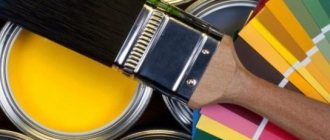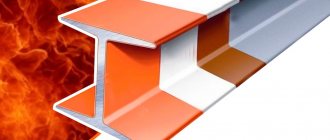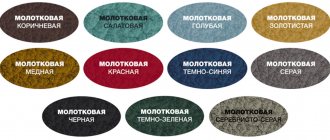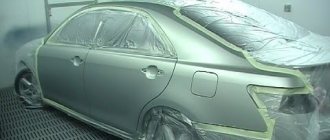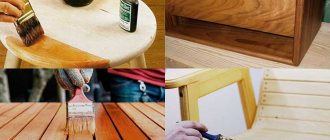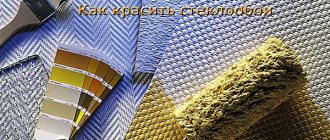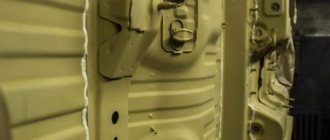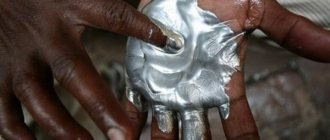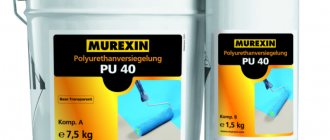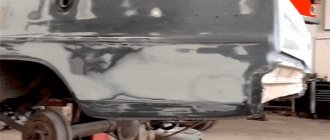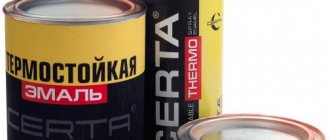Whatever the car, after a few years of use on our roads, rust will come out here and there. Actually, two-and-a-half years of operation have not spared my car either. Some places I’ll tell you about have been an eyesore for months now.
I already knew the scope of work in advance. These are bodywork, sills, crankcase protection, calipers with discs and a towbar. Each of these elements tended to develop into a real problem, so in the very first warm days it was planned to correct these problems. For work I needed: 1. Rust converter. This bottle should, even must, be lying around in any garage. It took me as much as 200 ml. 2. A brush for metal and the same bristly circle for a drill. Well, why are they embarrassed, the car is already old))) I should know that it can be tough! 3. I bought a can of anti-gravel to protect the crankcase. 4. A can of transparent anti-gravel from High Gear. In principle, the choice of transparent anti-gravel in the store was reduced to two copies. I chose this one because I read reviews about it and even when entering the store I knew what to look for 5. A can of high-temperature paint. 6. Any degreaser. This stuff should also be in the garage 7. Kit for touching up chips. I have a native one from KIA. It's a rare piece of shit, to be honest - it can be washed off with isopropyl alcohol at once and if you're diligent, picking it off with your fingernail is not a problem. It’s better to go to a paint selection shop, it seems to me cheaper and they’ll mix it better. 8. Masking tape and newspapers. 9. I do not list any rags, water and other consumables
I started with the crankcase protection, on which our valiant servicemen tore off one fastener, the second one stuck and they naturally did not tighten it, which sometimes caused the protection to rattle. But the most offensive thing is that they charged me 300 rubles for the fact that they “restored” it all. In fact, the money has flown away and nothing has been done. Freaks
The defense was in such a “wonderful” initial state
Properties, application and features of applying anti-gravel paint: we study thoroughly
Anti-gravel is a universal protective paint for the car and its elements.
It is convenient in that it can be used by specialized services, service stations and ordinary car enthusiasts. For independent use, it is best to use anti-gravel in cans, because... This form is convenient to use and does not require special skills.
Can anti-gravel coating be painted?
If applied incorrectly, anti-gravel coating often turns out uneven and may have pores. Also, if the storage period and conditions are violated, it will be impossible to mix the composition well and it will not be sprayed correctly, leaving pores. To ensure that the surface is protected from moisture penetration, it is better to paint the applied anti-gravel coating with paint or varnish.
Painting will extend the service life of the anti-gravel coating and add decorative properties.
There are paintable and non-paintable anti-gravel compounds.
Modern anti-gravel compounds contain synthetic polymers and do not contain bitumen, which makes it possible to paint them after drying.
To ensure that the paint coating will adhere to the anti-gravel coating, the anti-gravel container must bear the inscription Overpaintable, indicating that paint can be applied over the coating.
You can paint after 2 hours; in the case of water-soluble paints, you need to wait 24 hours.
After painting anti-gravel, the surface is better washed during use and does not change color.
One of the reasons for painting is the need to match the color with the body.
Car enthusiasts are constantly searching for the optimal anti-gravel coating in all respects, which will not only provide the vehicle with a presentable appearance, but also protect the body elements. Among the fundamental selection factors, it is worth highlighting the presence of preservative properties, safety and ease of application, speed, protective characteristics, level of adhesion with working materials and cost. All these requirements are met by anti-gravel in cans, which is the best option when it is not necessary to treat the entire surface, but only certain sectors. What are the advantages of anti-gravel coating in this form, and what can modern manufacturers offer?
Anti-gravel protection to reduce metal corrosion, seal and improve sound insulation properties is used to treat each car in the factory. After 3 - 5 years, the anti-gravel layer must be renewed, and application can be made both to the entire body and to its individual zones.
It is possible to carry out partial coverage yourself in a garage, and the best option would be anti-gravel in cans. What functions does such a protective agent perform, and what are the advantages of an aerosol over other forms? What do modern brands offer, and how to treat the body yourself?
What does anti-gravel coating provide?
You need to understand that different manufacturers make anti-gravel compounds of different quality and composition. High-quality modern compounds do not contain bitumen and have the following properties:
- good corrosion protection
- resistance to non-aggressive acids and salts
- high resistance to impacts from small stones
- reduces noise
- reduces vibrations
- provides protection against engine oil, water and fuel
How to prepare a surface for applying an anti-gravel compound?
It is important to properly prepare the surface before applying the anti-gravel coating. There should be no rust left. Sandblasting is perhaps the best way to prevent corrosion, but you can also use wire attachments on a drill and grinding wheels on an angle grinder. For more details, you can read the article “removing rust from a car body.” The surface must be washed, dried thoroughly and degreased.
Before spraying anti-gravel, you need to coat the welds and joints with a brush with a special joint sealant, and you can also apply primer with zinc.
It is necessary to cover adjacent surfaces using covering material and masking tape.
In case of application on a paint coating or acrylic primer, matting under anti-gravel can be done with sanding paper from p240 to p600.
Surfaces that are not subject to anti-gravel application must be covered with masking tape and covering materials.
In general, you need to prepare the surface as for painting.
Is it possible to apply anti-gravel to “bare” metal?
The anti-gravel composition can be applied to bare metal, as it has good adhesion to the metal. If the coating is applied correctly and a dense film is formed, it can serve as an anti-corrosion protection for the metal to which it is applied.
Although anti-gravel has anti-corrosion properties, for better protection it is recommended to treat clean metal first with acid primer, then with acrylic filling primer, and then anti-gravel on top. Or, if the metal is rust-free, then you can apply epoxy primer, and then anti-gravel. In this case, the treated areas will have good protection. Also, the instructions for modern bitumen-free anti-gravel compounds indicate the possibility of applying them directly to acidic soil.
What is important to know
Experts do not recommend purchasing inexpensive products in the hope of saving money. As a result, for a small amount you can get a product of dubious quality. It is better to choose among well-known brands that have already proven themselves well among car owners.
The main disadvantage of anti-gravel paint can be considered the content of various synthetic compounds in its composition - they can be harmful to health. That is why it is best to use personal protective equipment when working with this product.
Which anti-gravel is better
This material comes in several types:
- Varying in texture (smooth and textured);
- Anti-gravel, allowing subsequent painting;
- Anti-gravel used on certain elements of the car.
The textured composition is better suited for application to plastic. Before purchasing, you should study the list of parts for which a particular product is suitable.
The composition is produced in 3 versions:
1. Anti-gravel spray in cylinders.
- Hi-Gear CHIP STOP PROTECTOR CLEAR. Requires application in several layers. It has a transparent color, which allows it to be applied without compromising the aesthetic characteristics of the car. Creates a reliable protective film, but can be easily removed if necessary. Disadvantages include high cost;
- BODY 950. The manufacturer produces 3 colors: black, white and gray. These are Greek products that have long proven themselves in the car market. After application it can be painted. BODY 950 is one of the most popular in Russia, along with BODY 900 and BODY 933 (the last 2 cannot be painted);
- Liqui Moly 6109. Professional product. Available in black only. This composition is one of the best anti-gravels on the market, which significantly affects its price. It is permissible to use the composition on any surfaces, but it must be taken into account that it paints them black. The product itself is quite economical, made on the basis of polyurethane resins;
2. Anti-gravel for a pistol. Less convenient than balloon. Sometimes it has to be diluted with solvents. This application option is more difficult, but also more professional.
3. Anti-gravel in jars. Apply with a roller or spray gun. Earned a large number of positive reviews, although not as widespread as the previous 2.
Anti-gravel painting of cars in Moscow
Painting a car with anti-gravel can be useful for both the owner of an SUV and the owner of a sedan. If the car is used not only in Moscow, but is also used, for example, for trips to the country, such protection will be very useful. Gravel, road debris and sandblasting damage the paintwork, leaving damage to it. Therefore, if these defects are ignored, the affected areas will soon become covered with rust. This threatens, subsequently, through corrosion. Needless to say, repairing this type of damage will be quite expensive, since it involves welding work. In addition, such a process takes a lot of time.
The auto repair center's operating hours are from 9 a.m. to 9 p.m., seven days a week. Submit your application
Damage protection
Every motorist strives to protect his car. This can and, most importantly, should manifest itself in different aspects. For example, protection of complex mechanisms must be carried out both from the inside - with the help of fresh lubricant, and from the outside - from mechanical influences. This will keep the units in working condition for many thousands of kilometers. Many systems are protected by special filter elements. They are disposable and require periodic replacement. Therefore, in order to ensure the proper condition of a particular structure, it is necessary to comply with the regulatory deadlines for updating these parts.
The car body also needs protection. There are different ways to ensure the safety of body elements. For example, special films are often used. They cover the parts and prevent chips and scratches. Liquid protective agents are also used. They are applied to the surface in several layers. After crystallization, such compositions are able to protect bodies for a long time. There are painting techniques with special protective agents. But such procedures do not affect the entire body of the car, but only the lower part - for example, sills and wheel arches. These are the parts of the body that are most susceptible to damage.
Carrying out the operation
Anti-gravel painting of a car is carried out before the car body has received any damage. The event is carried out using special compounds that are applied to the intended areas. Compliance with technological standards will allow the spray to remain on the surface of the body for a long time.
Let's take a closer look at the procedure:
- Thorough washing
- Degreasing
- Application of material
- Drying
It is necessary to select the areas most affected by damage. Experienced specialists will tell you which areas require such protection.
Selecting a service
The price of painting with anti-gravel may vary depending on the materials chosen. Let us note that if the price declared by the masters is the minimum on the market, then, most likely, the effect of such a procedure will be very short-lived. Therefore, you should choose professionals. For example, you can use the services of Tokyo Service specialists. He will select high-quality compounds and perform the necessary operations in the shortest possible time.
Preparation
To properly apply anti-gravel coating, you need to properly prepare the car. This moment, in terms of level of responsibility, is not much different from preparation, for example, for painting. For this:
- rusty places, if any, are cleaned;
- the car must be washed and degreased;
- Before applying anti-gravel, paint, varnish and putty are sanded. Like others;
- paint and varnish coatings, the aerosol composition is not applied to a glossy surface.
How to apply the spray
Correct application does not require any special knowledge or complex preparation; it is enough to treat the surface of the car in the same way as before painting. All rusty areas are cleaned and treated with a rust converter. If necessary, they are well puttied and primed, after removing the old paint. The composition is not applied to the glossy coating, so the varnish is matted with sandpaper. Glue the tape along the application borders so you can see where to glue and where not.
To apply anti-gravel correctly, cover the inside of the thresholds with tape, otherwise the spray may end up where it shouldn’t. The bottom of the rear wing should also be covered. Now close the doors and put tape on them. Now you can matte the surface using sandpaper. Choose a rougher sheet, anti-gravel will soften everything. Now you should treat the car with a degreaser, and you can apply the product.
As you can see, there are a lot of benefits from anti-gravel, and using it is not difficult. The composition will help maintain the beautiful appearance of your car and protect it from corrosion. The main thing is to choose the appropriate option and apply it correctly.
What does anti-gravel coating provide?
Anti-gravel paint has several purposes:
- increased noise and vibration insulation;
- sealing – anti-gravel copes with sealing damage and cracks, preventing them from expanding;
- protection of boxes, bumpers, sills, underbody and other structural elements of the car from the negative effects of the environment, including salts and some acids. This product reliably protects the surface from moisture and dirt, stone impacts, thereby preventing the appearance of corrosion and cracks.
Features and Benefits
Anti-gravel paints have unique features and properties. The materials in this group differ from most car paints and varnishes. Among the main characteristics is high adhesion to most coatings, this makes the composition as versatile as possible. The protective coating can be applied to any areas and surfaces.
You can paint absolutely any surface with anti-gravel, and no serious preparation is required. All preparatory procedures include sanding and priming.
After treatment with anti-gravel, a special barrier layer is created on the surface, which in its properties resembles hard rubber. An elastic coating appears that absorbs impacts from small stones and other debris from the road. The layer has optimal density for painting.
The composition contains special additives that allow the paint to adhere well to any type of substrate. Anti-gravel is also used for repairing and sealing small chips and cracks. After complete drying, the protective layer can only be removed by mechanical means.
Colorless anti-gravel does not affect the factory color of the body in any way and, in addition, provides the car with better sound insulation - the sound from stone impacts will be much quieter due to the rubber protective layer. Modern anti-gravel material dries naturally, and complete drying takes no more than 60 minutes. During this time, the coating will gain full strength.
Anti-gravel painting is not only protection against chips and cracks, but also preservation. This way you can neutralize the impact of unfavorable factors. Due to this, the service life of the vehicle increases. Such paints are produced in aerosol cans - this simplifies the process of painting with your own hands. No special equipment is required to apply the protective coating.
In addition, anti-gravel in cans gives a uniform layer without streaks. The consumption is significantly lower than if a roller or brush were used.
What are the compositions?
When choosing transparent anti-gravel, you should take into account its varieties. They are united by an almost identical composition, which is based on acrylic with the addition of rubber, which gives the very necessary elasticity. Modifying additives will help increase the strength and durability of the protective layer. There are other application-specific features that will influence your choice:
- There is a textured and smooth coating. For example, anti-gravel with a shagreen effect will create the feeling of a leather surface and at the same time ensure better safety of the car.
- The modern market offers a good selection of car cosmetics, so you can choose both matte and glossy options.
- When planning to cover the treated surface with other compounds, opt for anti-gravel for painting.
- There are separate options for the body, bottom, plastic, etc. There are also universal options.
- Choice of color scheme. You can buy white anti-gravel, black, gray. This is a good option if you want the shade to be as close as possible to the color of the car. Anti-gravel gray, like other colors, can be painted on top with auto paint from a can.
For professional use
If sprays are considered an option for “home” use, then professionals use a special gun attachment for anti-gravel. It is more difficult to apply; you need not only a special device, but also special skill. The main problem with anti-gravel for a gun is that it is either too thick and does not want to be sprayed, or it is too liquid. Each gun takes some getting used to, so purchasing one for home use is impractical.
How to apply anti-gravel
The article describes how to apply anti-gravel with your own hands; the photo shows all the stages in such a way that even a non-specialist can do it independently in a garage. This coating can be applied both independently and as part of the paintwork when painting a car.Anti-gravel protection is present on all cars leaving car factories: the bottoms, sills and lower parts of the wings, and sometimes the lower parts of the doors, are treated with anti-gravel. Officially, antigravel is credited with noise absorption and anti-corrosion qualities, but at home it is applied not so much as anicor, but as a means of extending the life of already rotten parts. That is, for example, a rusty door is cleaned of corrosion, treated and anti-gravel is applied to make the part “look like” a little more. Anti-gravel coating thickness after application is greater than that of paint or varnish; it better protects body iron from flying stones; Moreover, if the anti-gravel is applied correctly, it does not “crack”. And when the rust begins to swell again, it will not be visible from under the corrugated surface; defects in the paintwork are not so noticeable on the “pimply” anti-gravel.
To properly apply anti-gravel to a car, you need to know: the surface for application must be prepared as when painting a car. If there were rusty places, then they need to be cleaned, treated with a rust converter, if necessary, putty and primed (bare metal needs to be primed; putty and old paintwork do not need to be primed for applying anti-gravel, but only sanded). The photo below shows putty on the doors and thresholds after treating the rusty areas.
Anti-gravel, like other paintwork, cannot be applied to a glossy surface, so we matt the varnish with sandpaper. By the way, this can be done after gluing the tape along the application border - this way you will see where to sand and where not. First, having opened the doors, we cover the inside of the thresholds with wide tape - this is necessary so that the anti-gravel does not get through the gaps where it is not needed. By the way, also cover the lower part of the rear wing.
We close the doors and tape them. First we glue the “beacons”. At the required distance from the bottom of the door (this will be the width of the anti-gravel strip), we glue a “beacon” from below the future border; in the photo we chose the width of the anti-gravel strip to be 10.5 cm. We glue such “beacons” on all doors - about 2-3 pieces each on the door.
We glue the border over the “beacons” with tape and newspapers. We also glue the wings, continuing the tape line of the door border. We remove the "beacons".
Matte the surface. Choose coarser sandpaper, the marks from the sandpaper are not visible under the anti-gravel - the size of the “sandpaper” is from 500 and even up to 120 (I would recommend 320). In the photo below we are preparing the lower parts of the doors and wings and the sills - sanding everything.
The plastic protection can be unscrewed, or it can be pasted over (photo below).
We degrease everything with a degreaser. And we apply anti-gravel.
Anti-gravel in the store comes in: 1. in spray cans (in aerosol packaging - for use independently at home) 2. a “gun” cylinder (for professional use, it requires a special spray gun for anti-corrosion protection of the body) 3. in banks (rarely used in car service stations)
If you are reading this article, then most likely you do not have a special pistol, so let’s consider option 1. Read the instructions on the can. Most likely it will say that the container needs to be shaken for 3-5 minutes. Then apply anti-gravel from a distance of about 25 cm. Then let the applied layer dry for about 5 minutes until it dries slightly. Then reapply anti-gravel and dry for at least several hours.
Anti-gravel under the “gun” (number 2 on our list) is more difficult to apply, although the instructions would seem to be the same. Shake the balloon. Wrap it on the “gun”. Spray. Such anti-gravel either does not want to be sprayed (too thick) or flows (too liquid). You need to get used to each gun, thick anti-gravel needs to be diluted a little with a solvent (and mixed well), and the compressor pressure needs to be adjusted. Be sure to practice on a flat surface the first time! It is better to apply in 2 layers. If there are drips, try moving the gun quickly along the surface and do not linger in one place. Spraying occurs as during painting: the spray gun goes to the right to the end, then to the left to the end. Please note that the tape should also be slightly colored; a common mistake for beginners is to stop the hand even before the border.
Next question. Will we paint the anti-gravel in the body color? Let's consider the options.
No, we will not paint anti-gravel. Then we dry it (it’s better to let it sit for half a day), peel off the tape and that’s it.
Yes, we will paint it. Then, when buying anti-gravel, pay attention to whether you can apply paint to it, this is important. Most anti-gravels can be coated with paints and varnishes, although some cannot. We'll check in the store.
If we only paint the anti-gravel (we don’t paint the doors), then we paint it in the body color and dry the paint. We peel off the tape the next day.
If we paint the body (doors, fenders) together with anti-gravel, then after applying it (after 10 minutes) we tear off the tape and paint the entire parts together with anti-gravel. This option is used when we paint the entire doors, and apply anti-gravel immediately before painting (photo below - we applied anti-gravel, removed the tape, now we will paint the entire doors and the thresholds too).
Regarding the last option: the anti-gravel application itself is like a small stage in the process of painting a car. Please note that before applying anti-gravel, all work on the elements (in our case, car doors) must be completed - puttying, priming, and the soil must be sanded.
Anti-gravel after painting - in the photo below.
In general, in terms of surface structure, the “gun” (professional) option is preferable to the aerosol one. And it would be nice to paint it on top as well.
Did you like the article?
add
| bookmark page |
| subscribe |
| share |
list of practical articles:
— How to glue the letters yourself (on the trunk, fender, etc.)
— How to repair a bumper yourself? Instructions with photos and videos
— How to treat rust and saffron milk caps and then paint them
— Mastic, anti-gravel and Movil Briefly about the differences
— How to apply anti-gravel if you decide to do it yourself
— In summer, Nizhny Novgorod is covered in linden, road tar and fresh paint; read how to clean your car from foreign matter
— About painting NC nitrate in car paint and everyday life
— How to paint a car part with a transition? Painting a part with a transition means that the base paint does not completely cover, but only in the place of repair.
— do the screws come out? - Let's open it! -process description
— Assembling a reverse hammer for body work
How to paint thresholds with anti-gravel?
Hi all! In today's article we will look at the question of how to paint thresholds with anti-gravel, the article contains many photos and is written in simple and understandable language.
It is no secret to motorists that due to salt, reagents and design features, the sills on a car are the first to begin to rust.
These days there are many options for restoring thresholds, but the simplest and cheapest option seems to be to cover the thresholds with anti-gravel. In common parlance this procedure is sometimes called “blowing out”….
So how can you paint the thresholds yourself with anti-gravel?
We will need:
- Grinder brush for removing paint
- Sandpaper No. 80-240 (not important)
- Solvent 646 MOZHKHIM
- Silicone remover
- Anti-gravel
- Primer
- Gravel
- Spray gun
- Compressor
- Masking tape
- Covering film
Operating procedure:
- We remove the rust on the thresholds with a brush on an angle grinder. If holes are revealed, it is advisable to weld them and grind them, or at least bauxite them (coat them with epoxy resin)…. If the car goes for sale, you can simply putty....
- Using 80-240 sandpaper, we sand down the paint that was not removed at the 1st stage.
- We seal the car so that dust does not get in when priming.
- We prime.
- After waiting for it to dry, we mat the primed areas with sandpaper number 180-240.
- Re-cover the car with film.
- Degrease.
- We apply anti-gravel.
- We wait for it to dry (usually about an hour), stick the car up and enjoy the work done.
Here are some photos of the process. Everything is clear here without comment:
Typical mistakes, or how not to cover with anti-gravel.
Anti-rust anti-gravel coating.
Yes, that’s exactly what they do for sale, but the problem is that the anti-gravel will fall off very quickly due to rust and the rate of rotting underneath will increase many times over.
Anti-gravel coating on bare metal.
The fact is that anti-gravel material is very porous and it breathes. If you cover bare metal with it, corrosion will occur very quickly.
Anti-gravel coating without matte finish.
Anti-gravel is distinguished by fairly high adhesion to the surface, and it applies to primer quite well even without a matte finish; it will also adhere quite firmly to paint, but when washed with a Karcher, it is highly likely that the anti-gravel coating will fall off in large pieces.
What can be coated with anti-gravel?
The protective composition is applied to all kinds of body parts - if we talk about the bottom and sills, then they usually use a bitumen base, which then should not be painted. If you choose an aerosol preparation, you can cover anything with it - even bare metal due to its high adhesion and adhesion to steel. After proper application, anti-gravel forms a strong film - it protects the part from rust. In addition, the composition can be applied to a putty surface, as well as to other types of surfaces:
- To plastic ones,
- For galvanized steel,
- For stainless steel,
- For matte paints and varnishes.
In addition to protection, many car enthusiasts note simplified further care of the body - the film does not retain dirt, dust, water stains and other contaminants.
How to do it completely according to science?
Look at the thresholds of new cars from the assembly line - they are covered with anti-gravel and painted over it with paint in the color of the body.
How it's done?
Everything is very simple - we follow all the points from the first part of the article. After the anti-gravel has dried, we mat its surface with 600-grit sandpaper. After that, we degrease it and paint it successively with paint in the same color and fill it with acrylic varnish - all the thresholds are like they came from the factory.
I hope that after reading this article, you will understand how to paint thresholds with anti-gravel yourself.
Features of anti-gravel paint for cars
Author: Anastasia Isakova · Published 09/06/2017 · Updated 09/06/2017
When operating a car, it is constantly exposed to small pebbles, sand, and gravel. As a result, scratches appear on the surface, chips form, the paintwork is destroyed, and the factory protective layer peels off. Anti-gravel car paint will help to avoid such consequences. It creates a special coating on the surface that protects the body from scratches, chips and other damage.
Features and Benefits
Anti-gravel paints have unique features and properties. The materials in this group differ from most car paints and varnishes. Among the main characteristics is high adhesion to most coatings, this makes the composition as versatile as possible. The protective coating can be applied to any areas and surfaces.
You can paint absolutely any surface with anti-gravel, and no serious preparation is required. All preparatory procedures include sanding and priming.
After treatment with anti-gravel, a special barrier layer is created on the surface, which in its properties resembles hard rubber. An elastic coating appears that absorbs impacts from small stones and other debris from the road. The layer has optimal density for painting.
The composition contains special additives that allow the paint to adhere well to any type of substrate. Anti-gravel is also used for repairing and sealing small chips and cracks. After complete drying, the protective layer can only be removed by mechanical means.
Colorless anti-gravel does not affect the factory color of the body in any way and, in addition, provides the car with better sound insulation - the sound from stone impacts will be much quieter due to the rubber protective layer. Modern anti-gravel material dries naturally, and complete drying takes no more than 60 minutes. During this time, the coating will gain full strength.
Anti-gravel painting is not only protection against chips and cracks, but also preservation. This way you can neutralize the impact of unfavorable factors. Due to this, the service life of the vehicle increases. Such paints are produced in aerosol cans - this simplifies the process of painting with your own hands. No special equipment is required to apply the protective coating.
In addition, anti-gravel in cans gives a uniform layer without streaks. The consumption is significantly lower than if a roller or brush were used.
Surface preparation before anti-gravel coating
When applying the composition yourself, first decide how to properly prepare the surface for the process, since this directly affects the adhesion and further strength of the protective film. The surface to be treated should not be rusty - clean it with sandblasters, and if there are none, then with wire attachments on a drill or diamond attachments on an angle grinder. Upon completion of cleaning, thoroughly rinse and dry the surface - cover the welds with sealant or a mixture of primer and zinc. When applying the composition to paintwork or acrylic primer, treat with sanding paper - this will increase adhesion. Those surfaces on which it is not planned to apply anti-gravel must be protected with masking tape or covered with other material.
What is important to know
Experts do not recommend purchasing inexpensive products in the hope of saving money. As a result, for a small amount you can get a product of dubious quality. It is better to choose among well-known brands that have already proven themselves well among car owners.
The main disadvantage of anti-gravel paint can be considered the content of various synthetic compounds in its composition - they can be harmful to health. That is why it is best to use personal protective equipment when working with this product.
Tips for choosing
Almost all paints are identical in composition. Acrylic with rubber is used as a base, which gives the coating elasticity. Modified additives increase the strength and durability of the protective layer. Which anti-gravel is better to choose? There are several basic recommendations:
- Paint can give a smooth or textured surface. For each product and material there is an optimal option. Thus, for processing plastic, it is recommended to choose textured solutions. The material with a shagreen effect imitates a leather surface.
- The coating can be glossy or matte; accordingly, the paint should be chosen taking into account your wishes.
- If subsequent painting of thresholds or other elements is necessary, it is better to choose certain types of anti-gravel for painting.
- There are different anti-gravel products for different surfaces - they produce product versions for the body, underbody, and plastic parts. There are also universal solutions.
- Manufacturers offer a wide color palette. You can choose transparent, white, black, gray anti-gravel or paint of other shades. If the color is not satisfactory, then the treated surface can be painted with auto enamels from a spray can.
There are also formulations for professional and home use. The professional composition is distinguished by the fact that for work you need a spray gun. Working with it is more difficult - experience is required. Gun paints are either too thick or too thin. Therefore, if you are not a specialist, it is better to choose anti-gravel paint in cans.
On video: review of anti-gravel paint HB BODY Auto Flex 951.
Types of anti-gravel
If you want to protect your car from negative external influences, first you should choose the type of drug - they differ from each other in the base, which can be either acrylic or rubber. In addition, the products have different compositions - they can be distinguished by the following criteria:
- Texture – the texture of anti-gravel can be smooth or textured. The second type is recommended for use with plastic elements - it protects parts better than a smooth composition.
- Color – the best option would be a gray product, as the shade matches many car paintwork. Of course, you can find black or white, as well as completely transparent products in modern stores.
- Application requirements - some aerosol antigravels are used only at above-zero temperatures.
If we consider the form of release of the drug, it can be:
- In a cylinder - it is sprayed with a special gun, but the density of the composition and the compressor pressure must be selected separately for each gun.
- Aerosol – very easy to use, can be compared to regular spray paint. This anigravite can be applied independently in the garage.
- In a bank - a professional format, found in car services. The product from the jar is applied in several layers to get maximum effect.
Experts unanimously declare that aerosol is the best form of release, since it does not require special knowledge when applying - just follow the instructions.
How to apply anti-gravel?
Before applying anti-gravel, you should know some nuances:
- First, the surface is treated (it must be degreased).
- Adhesive tape is placed along the paint borders.
- It is better to apply the coloring composition in 2-3 layers.
- Between layers take a break of several minutes and shake the can.
- The optimal layer of applied coating is 1 mm.
After applying anti-gravel, when the surface is completely painted, the car is left to dry. How long it will take for the protective coating layer to dry depends on the temperature, but not less than 2 hours.
What will the experts say? (2 videos)
How to apply anti-gravel coating?
Before use, you can dip the anti-gravel bottle into a bucket of hot water and leave for a few minutes. The composition will become more fluid and will mix better when shaken and sprayed.
Shake the can for 3 minutes before use.
The anti-gravel compound can be applied with a brush or roller, but the best option is using compressed air and a special gun.
The gun must have a 4mm nozzle. Apply at a pressure of 4–7 bar.
The temperature during application should be from +10 to +25.
When spraying, keep at a distance of approximately 20 cm.
After use, turn the can upside down and spray until clean air comes out.
First, a thin layer is applied, then the remaining layers create the desired structure and film.
Apply 2–3 layers. The break between layers is 2–5 minutes. After each layer you need to shake the can.
The optimal thickness of the anti-gravel coating is 1 mm.
Do not spray onto exhaust system or engine components.
Drying time at 20 degrees Celsius: after an hour - it stops sticking, after two hours - it can be coated with paint.
After complete drying, the unpainted anti-gravel coating becomes matte.
